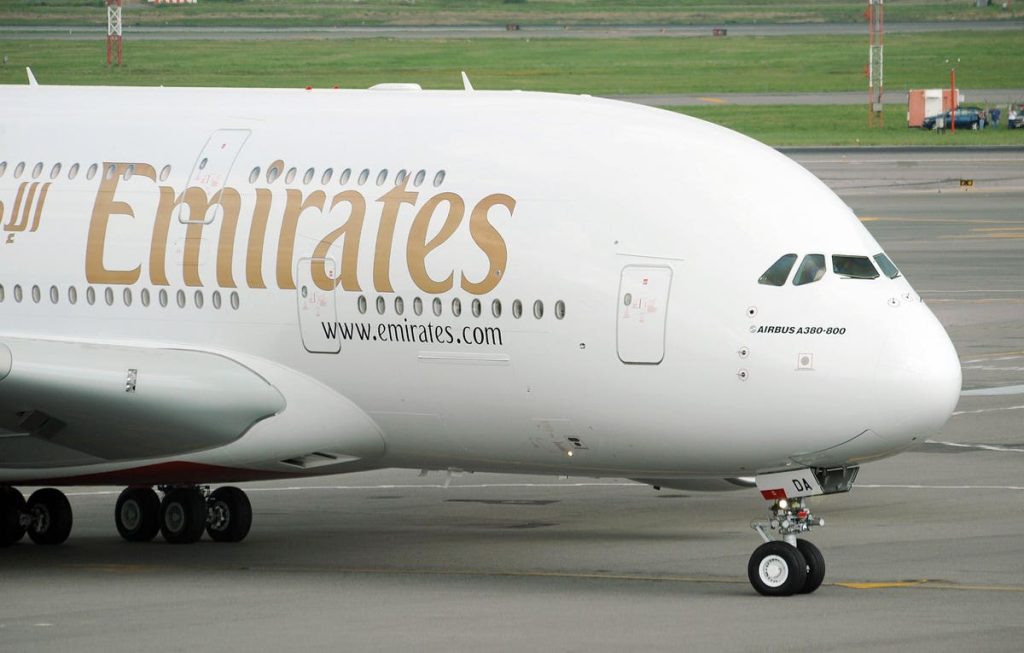The 1970s saw the travel industry take glamour to new heights. This is epitomized by a chic commercial for American Airlines. Smiling passengers sip champagne and lounge on sofas as Frank Sinatra Jr serenades them in the plane’s own piano bar. It has been downhill ever since.
In the 50 years since, the industry has focused on reducing the cost per customer rather than providing premium services. But there are still airlines that choose to chart a different course. One example is Emirates Airlines. The company started with $10 million seed funding and two wet-leased aircrafts from Pakistan International Airlines in 1985.
Its strategy to prioritize customer experience—albeit without the sofas and the live entertainment—has helped to drive impressive growth. The airline reported revenues of $32.6 billion, generated by more than 100,000 employees, for the 2022/23 financial year.
While an emphasis on better services is part of the firm’s success story, there are four broader lessons the rise of Emirates Airlines offers.
Lesson 1: If everyone goes to the right, turn left
This should be strategy 101. Firms can only gain competitive advantage by offering something others don’t. However, in mature industries years of benchmarking result in similar offerings across the board. SUVs from different car makers are hardly distinguishable. And the ten highest box office crossing movies in the US last year were all sequels.
The international airlines industry is no different. In the 1990s—when Emirates’ expansion gained steam—aging fleets shipped tightly packed rows of cramped passengers through a few global hubs in Europe and America. Amenities had been cut in the interest of per passenger economics.
Emirates took a different approach. First, it targeted underserved markets with large populations. In Pakistan, for example, most cities were served by Pakistan International Airlines which funneled international flights via Karachi. With Emirates, passengers can avoid multiple layovers, flying direct to Dubai from six different locations.
Second, as a senior Emirates manager put it in a Harvard Business School case, the company tried to “replicate the Pan Am experience, to bring the glamour back into flying”. It invested heavily in amenities, inflight entertainment, more sitting space, and new planes. Over the last 10 years it has won 65 World Travel Awards.
In short, don’t replicated your competitors. Identify something unique.
Lesson 2: It’s the resources, stupid!
Unique trajectories are great but how do you pull them off? This is where resources come into play. Emirates has two which are hard to replicate.
First, there is geography. Dubai is the only super hub with non-stop flights possible to all corners of the world. The airline has been in the perfect position to facilitate the increasing engagement of emerging economies, leveraging fast growing trade between China and Africa, for example.
The second unique resource is strong government relations. Lufthansa and Air Canada’s previous claims of unfair advantage somewhat miss the point. The interests of the Dubai Government and Emirates Airlines are naturally aligned. Economic growth rests on Dubai’s success as a travel destination and trade facilitator. This turned Dubai government into an enthusiastic partner.
A good example is the close co-operation between the Dubai Airports (like Emirates, owned via the government’s Investment Corporation of Dubai), the city, and the airline. This enabled pro-active investment in new terminals to accommodate growth, in stark contrast to cities like London where congestion, local resistance, and different political agendas continue to slow down expansion at Heathrow Airport.
Emirates specific resources are unique, but the more general point is that no strategy can succeed without the appropriate resources. The harder they are to replicate, the better.
Lesson 3: Partnerships yes, but only those that work for you
Strategists easily overlook partnerships. They are not quite as sexy as acquisitions or high-profile market entries. In the airline industry, alliances are higher up the corporate agenda. Star Alliance, One World, and SkyTeam dominate the industry. By sharing routs, they offer easier connections.
The need for consensus, however, introduces slower reaction times. Emirates therefore decided to stay independent and sign code-sharing agreements with individual airlines instead. Nonetheless, partnerships played an integral part of Emirates’ rise. In the start-up phase, both planes and personnel came from Pakistan International Airlines as there was not sufficient expertise in-house.
More recently the close co-operation with Airbus and Boing was important. Dubai’s location was advantageous right from the start but destinations like the West Coast remained out of reach. Emirates’ large pre-orders for long-ranging planes facilitated the investments necessary. Similarly, Emirates’ pre-orders were instrumental in the development of the A-380, a plane particularly well suited to the comfort proposition, which even installed showers for first class passengers.
Partnerships can fill resource gaps and facilitate your strategy. The key insight here: opt for those that work for you, not those that everyone seems to join. Network effects obviously exist but with the hype around ecosystems it is easy to overestimate them.
Lesson 4: Small things can add up
Strategy usually concentrates on the big headlines. Whether these big headlines ever materialize depend on hundreds of small decisions.
One core pillar of the Emirates business model is premium services. An easily overlook but important aspect of customer service is the language capabilities of crew members. The more obvious one is having at least one native speaker corresponding to countries a flight connects. But Emirates goes a step further. On flights from Sao Paolo to Dubai it makes sure a Japanese speaker is on board, acknowledging the sizable Japanese-Brazilian population.
Another illustration of how small things add up is Flex Tracks a, technology reducing fuel usage. It identifies favorable weather conditions such as jet streams. In its first five years, the application saved 10 million liters of fuel. Fuel efficiency is combined with low labor and maintenance costs to keep ticket prices attractive, despite premium service.
The future of Emirates Airlines
Looking ahead, the foundations of Dubai’s success are likely to remain relevant. Still, several new challenges are emerging. For starters, Qatar and Etihad Airways are pursuing a similar strategy. Then there is the question of how Dubai can sustain the fast-paced growth of recent years. Finally, there is uncertainty about whether new technology will change the fundamentals of travel.
Emirates will have to navigate that turbulence successfully in order to keep flying high.
Read the full article here










